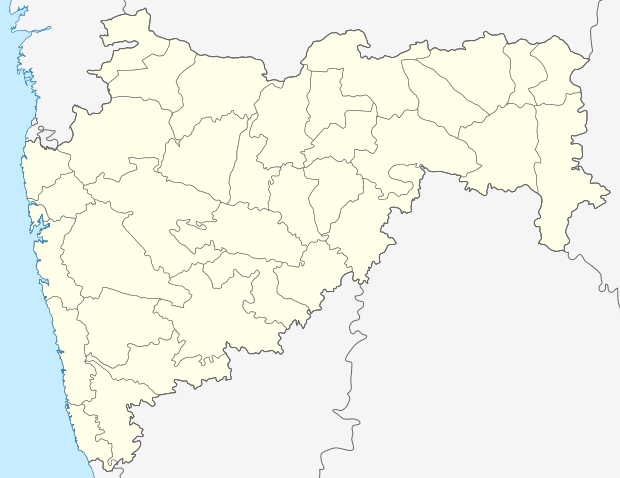Kalyangad
| Kalyangad Fort | |
|---|---|
| कल्याणगड | |
| Satara District, Maharashtra, India | |
 Kalyangad Fort | |
| Coordinates | 17°46′42″N 74°07′35″E / 17.7784416°N 74.1264734°E |
| Site information | |
| Owner |
|
| Open to the public | Yes |
Kalyangad Fort (also called Nandgiri) (Koregaon [1]) 3,537 feet above sea level, stands at the end of a spur of the Mahadev range running south-west from the villages of Vikhale and Bhadle, eight miles north of Koregaon and about fourteen miles north-east of Satara.
History
According to tradition the fort was built by the Silahara king Bhoj II, of Panhala [Grant Duff's Marathas, Vol. I, 27]. In 1673 with other Satara forts it was surrendered to Shivaji [Grant Duffs Marathas, Vol. I, 202]. The Pratinidhi, administered it till his struggle with Bajirao, the second Peshwa (1720–1740). In 1791, Major Price describes it as looking like the hull of a ship of war with opposite it another hill with on its summit some places of devotion [Memoirs of a Field Officer, 261]. In the last Maratha war, it fell to the army of General Pritzler in April 1818. In 1862, it is described as a dismantled and uninhabited fort with a steep approach and a strong gateway but no water and no supplies [Government List of Civil Forts, 1862].
Ways to reach
Separated from the rest of the spur by a small gorge or Khind and stands on a lower hill than the Candan Vandan range close to its north-west. It forms, therefore, a less conspicuous object from Satara than the Candan Vandan twins, though from the south it comes prominently in view as it forms the southern extremity of the spur dividing the Vangna and Vasna valleys. The hill sides are very steep and rugged and the scarp is very perfect. There is no regular approach and the ascent is made by very tortuous and precipitous footpaths from Dhumalvadi the village immediately at the foot of the hill to the east to the first gate directly above the village and facing north. Though easy at first, the ascent becomes very steep afterwards and much blocked by prickly pear.
Halfway up in a ravine is a good spring and pond known as the Kham pond, the water of which is not potable. The pond is hollowed out of the rock in three divisions and the roof is supported by pillars. The water is abundant. Mr. H. R. Cooke, C. S., found that perhaps the most remarkable feature on the hill was its water-supply. Immediately after entering the lower gate a steep footpath descends within the western was into a hollow at the bottom of the scarp. The hollow is about forty or fifty feet deep. When the bottom is reached the entrance to a huge cavern is seen which can only be reached by stooping. The cavern has much water but very dark. Outside the gate and to the north there evidently were huge caverns but these have been built up with rough masonry. The fort has two gateways the one below the other connected by steps. The first gate faces north, the path turning abruptly as it is reached. Within is a hollow used formerly for stores. From the inside facing east is another cave pond called the Gavi also full of good water. The entrance to it is protected by a wall. This cave pond is very difficult of access, the way being thickly blocked with prickly pear. The second gateway of mortared stone leads out into the plateau, which is about two hundred yards high by one hundred broad with many ruined buildings, and four chief ponds inside the second gate. The first pond is about ninety feet by forty in area and twenty feet deep, its sides made of large blocks of masonry. Another smaller one is near the eastern face; a third is in a hollow stopped with an earthen dam; and the fourth is a small one near the south wall.
Features
The fort walls are in a state of bad repair. There are no buildings inside the fort except the temple of God Maruti. There are also idols of Dattatraya and Parasnath. It is said that the water of the pond is good for health. Even though water is available abundantly there is no habitation on the fort. The temple of Maruti was renovated by Dahanebuva of Ninapadali. The tomb of Abdul Karim, a Musalman Saint which is inside the fort is still visited by a few people. An Urus is held in his honour for five days before Holi Paurnima. The fort was the headquarters of an administrative sub-division with a treasury and had an establishment of a mamlatdar, phadnis, sabnis, havaldar and daffedar, two karkuns, three naiks, and one hundred and sixty sepoys.
